site search
online catalog
RARE INSCRIBED, IDENTIFIED BARTHOLOMAE PATENT FILTER CANTEEN AND MESSKIT OF ABNER O. SHAW: PRIVATE 7th NYSM; ASST. SURGEON 20th MAINE: HE SAVED JOSHUA LAWRENCE CHAMBERLAIN’S LIFE AT PETERSBURG!
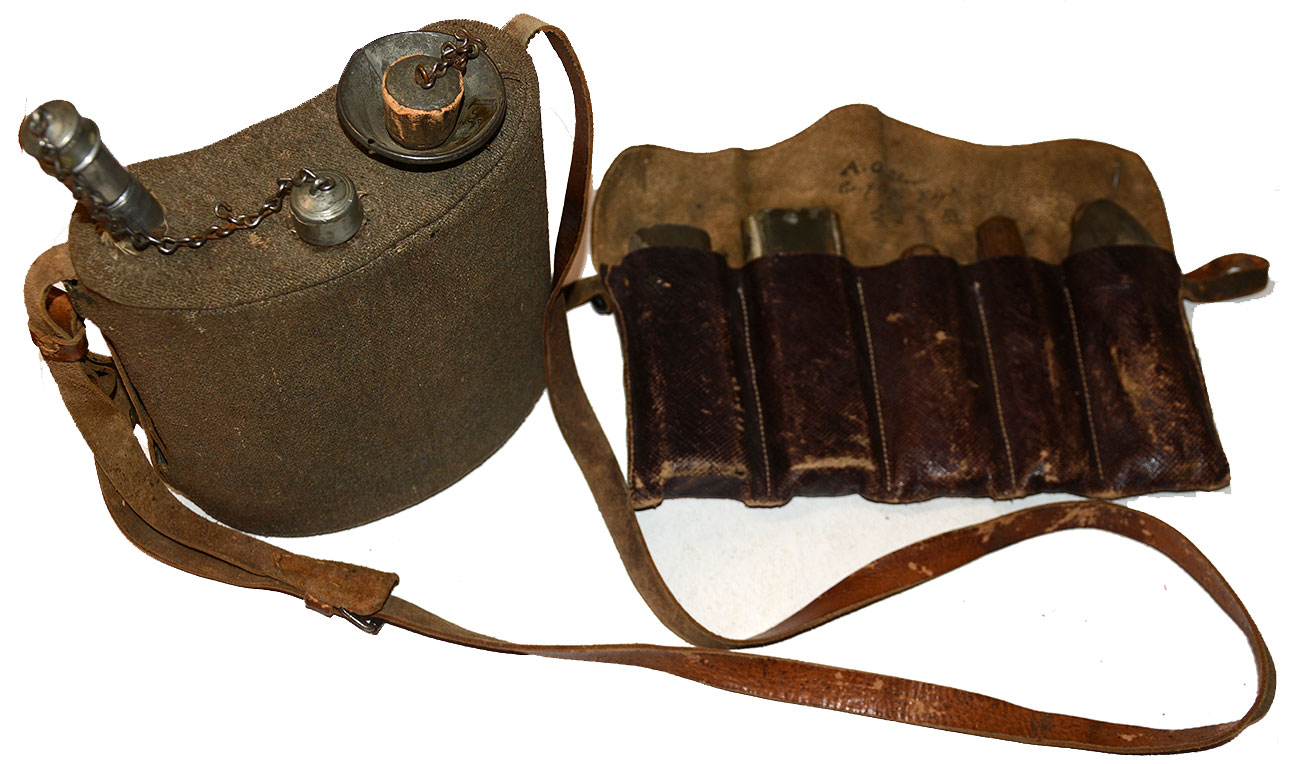
Hover to zoom

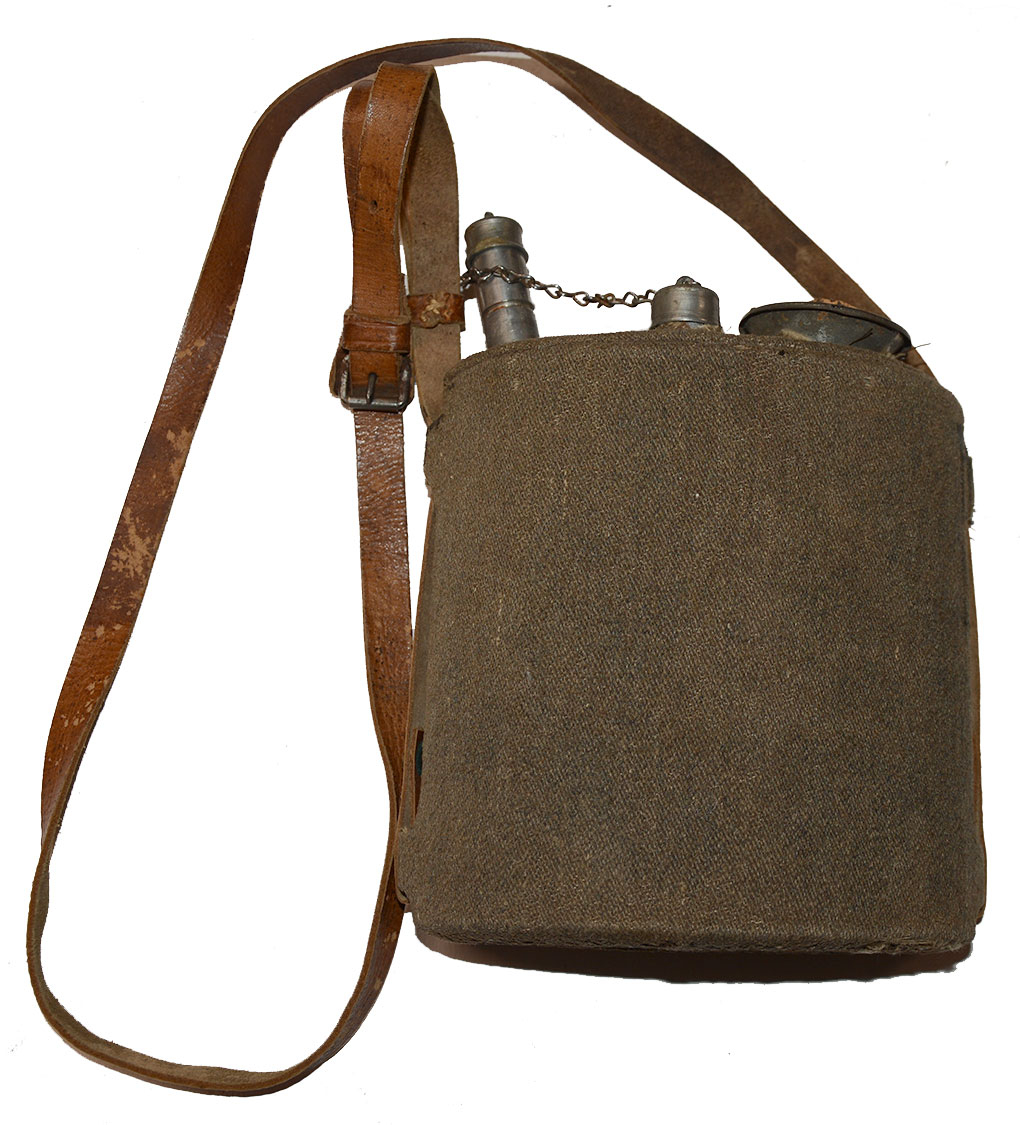
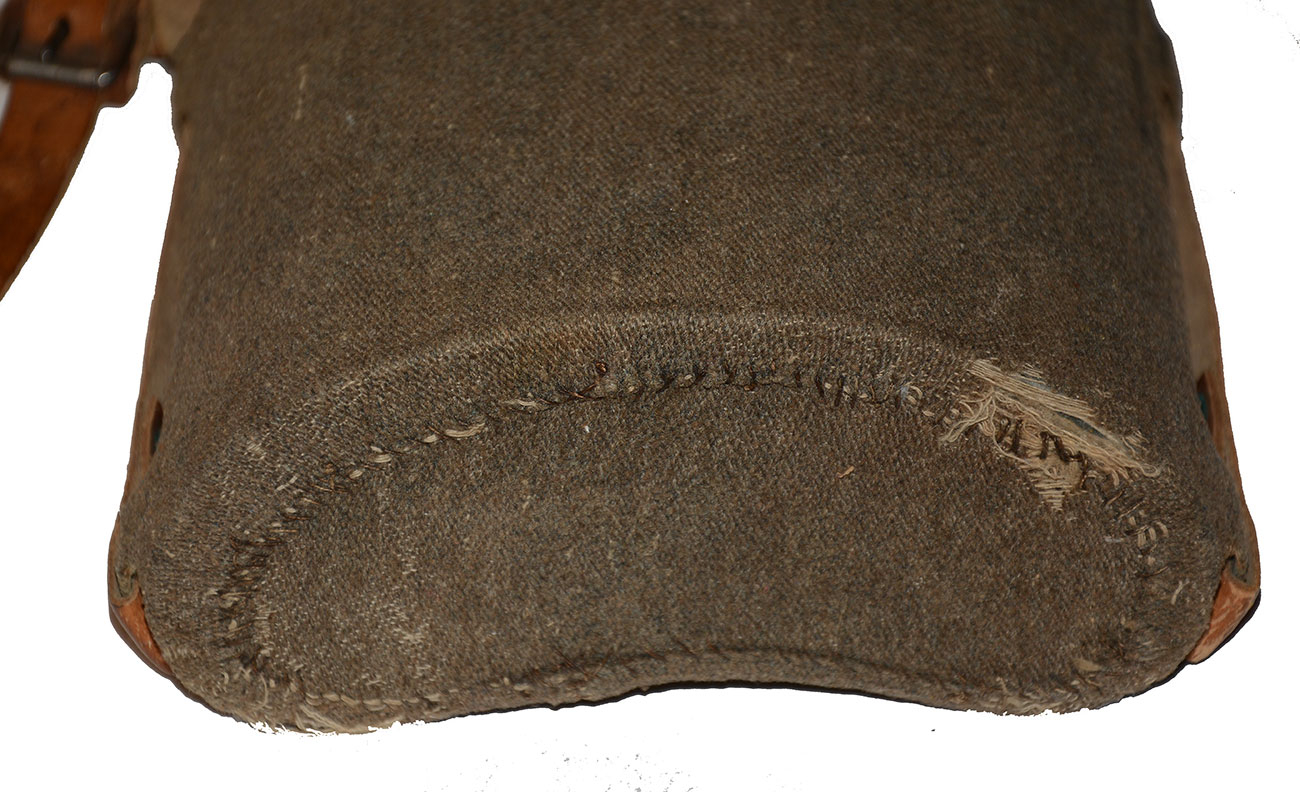
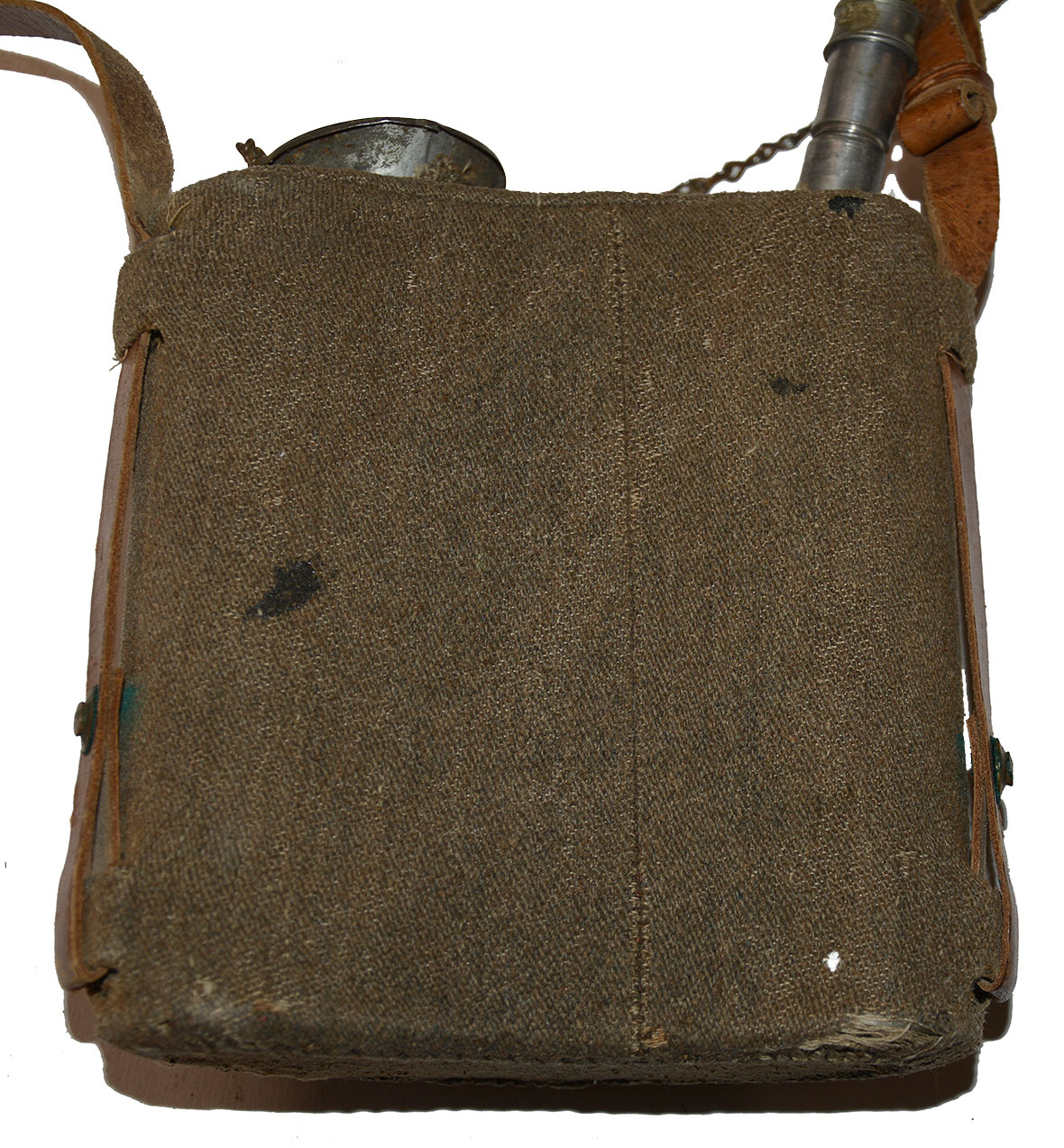
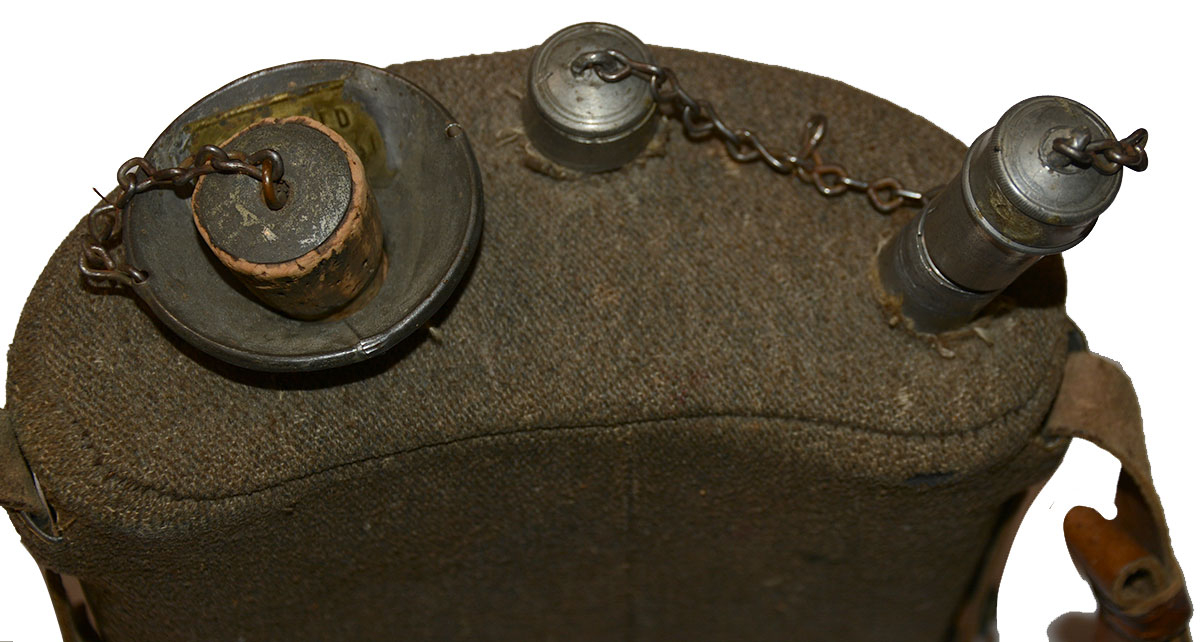
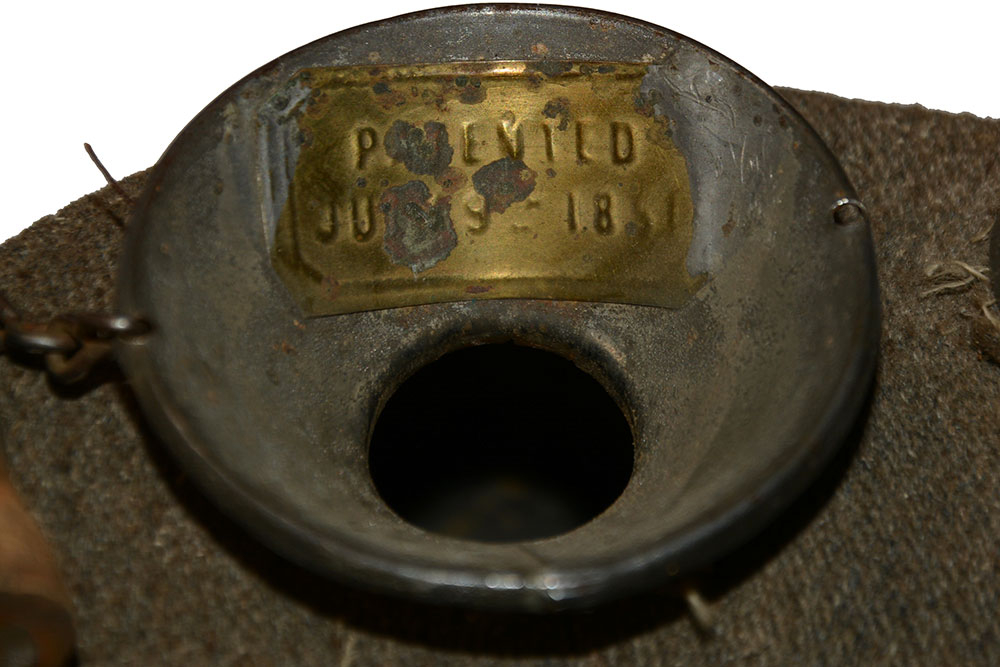
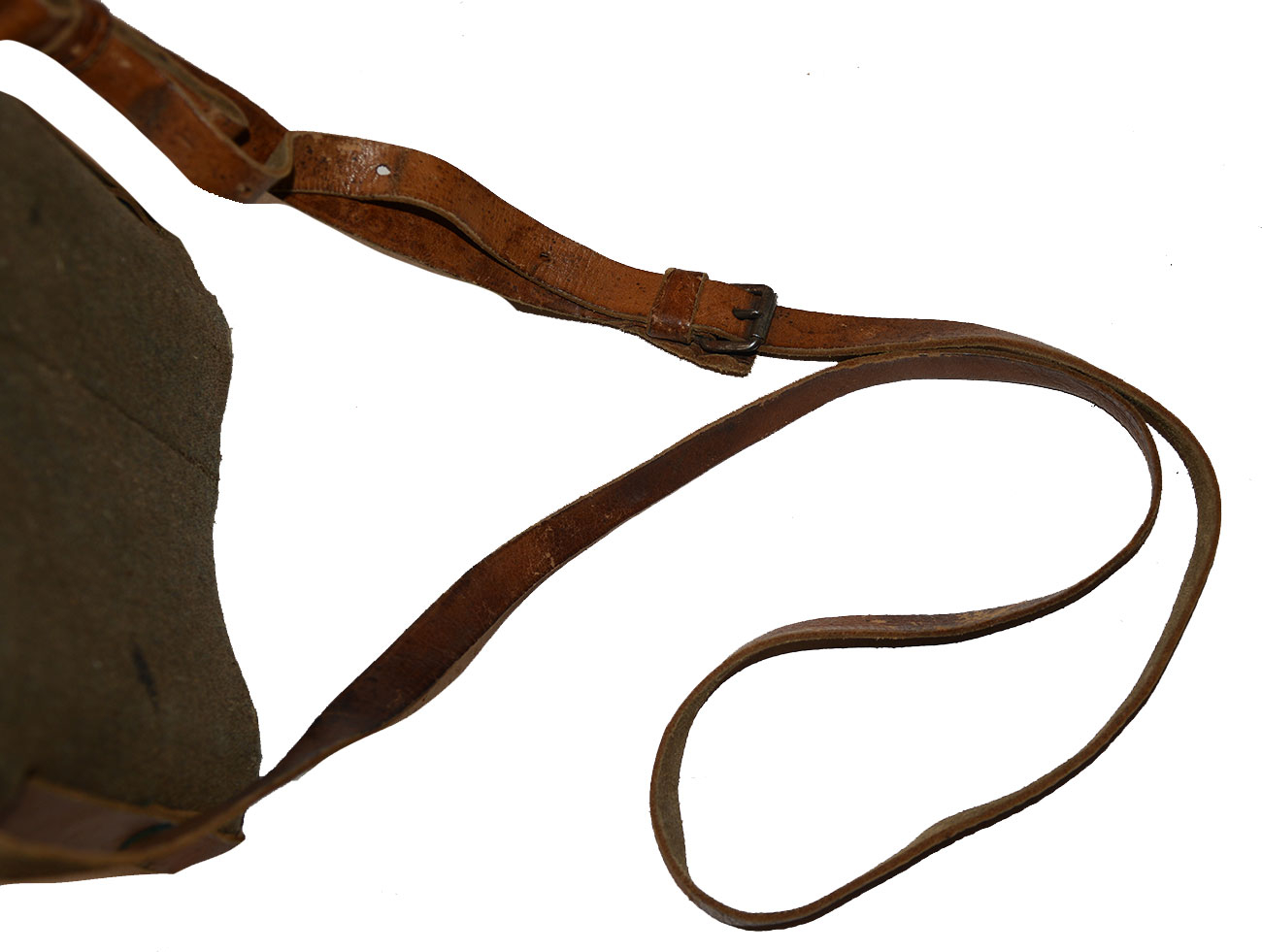
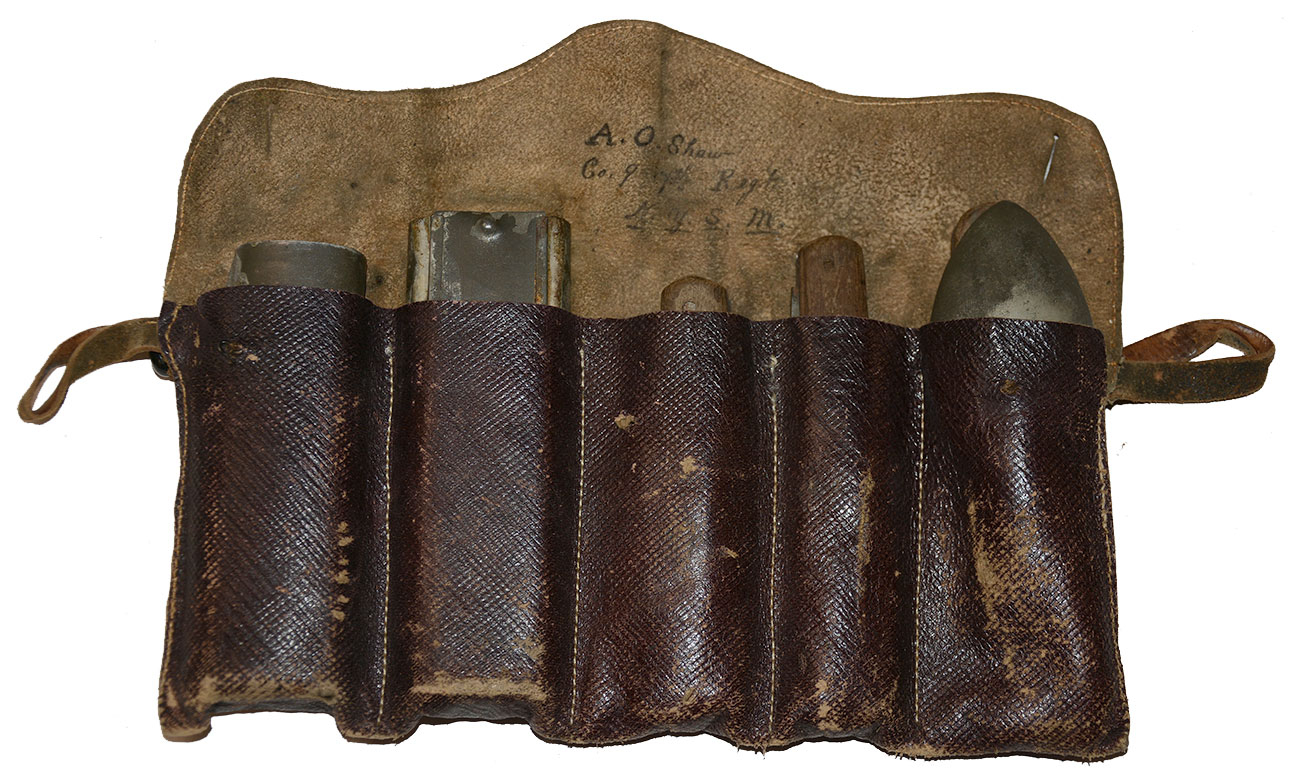
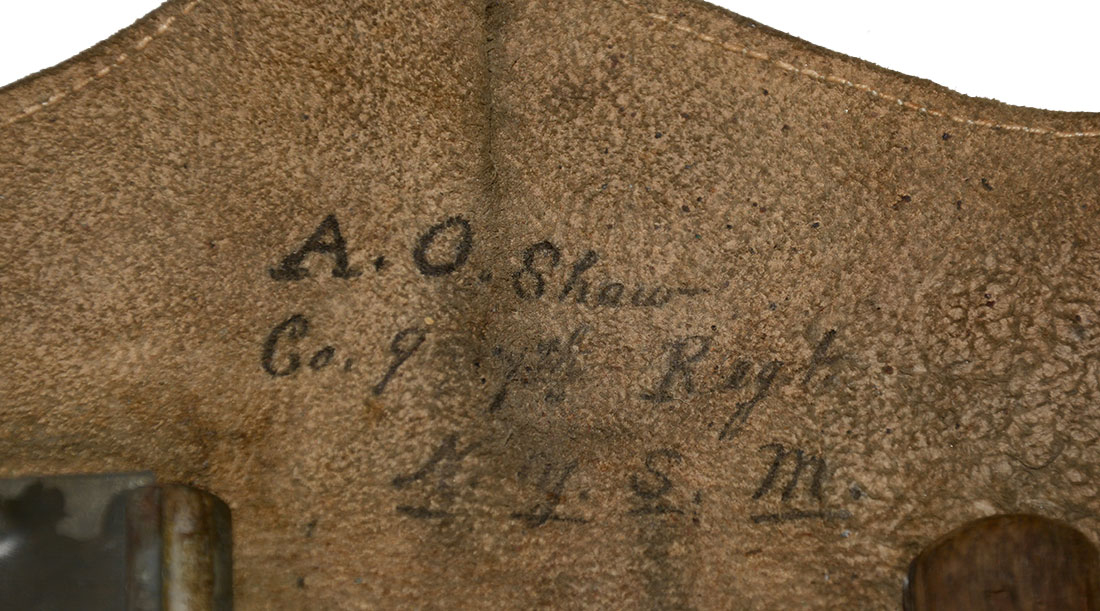
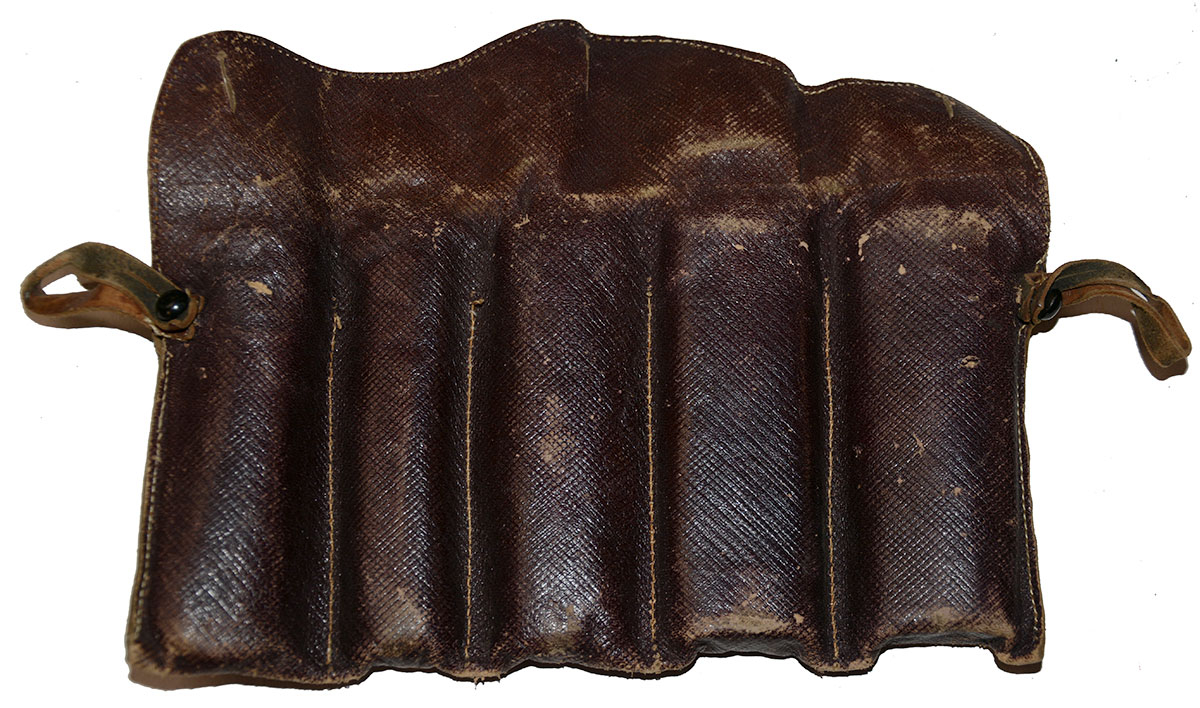
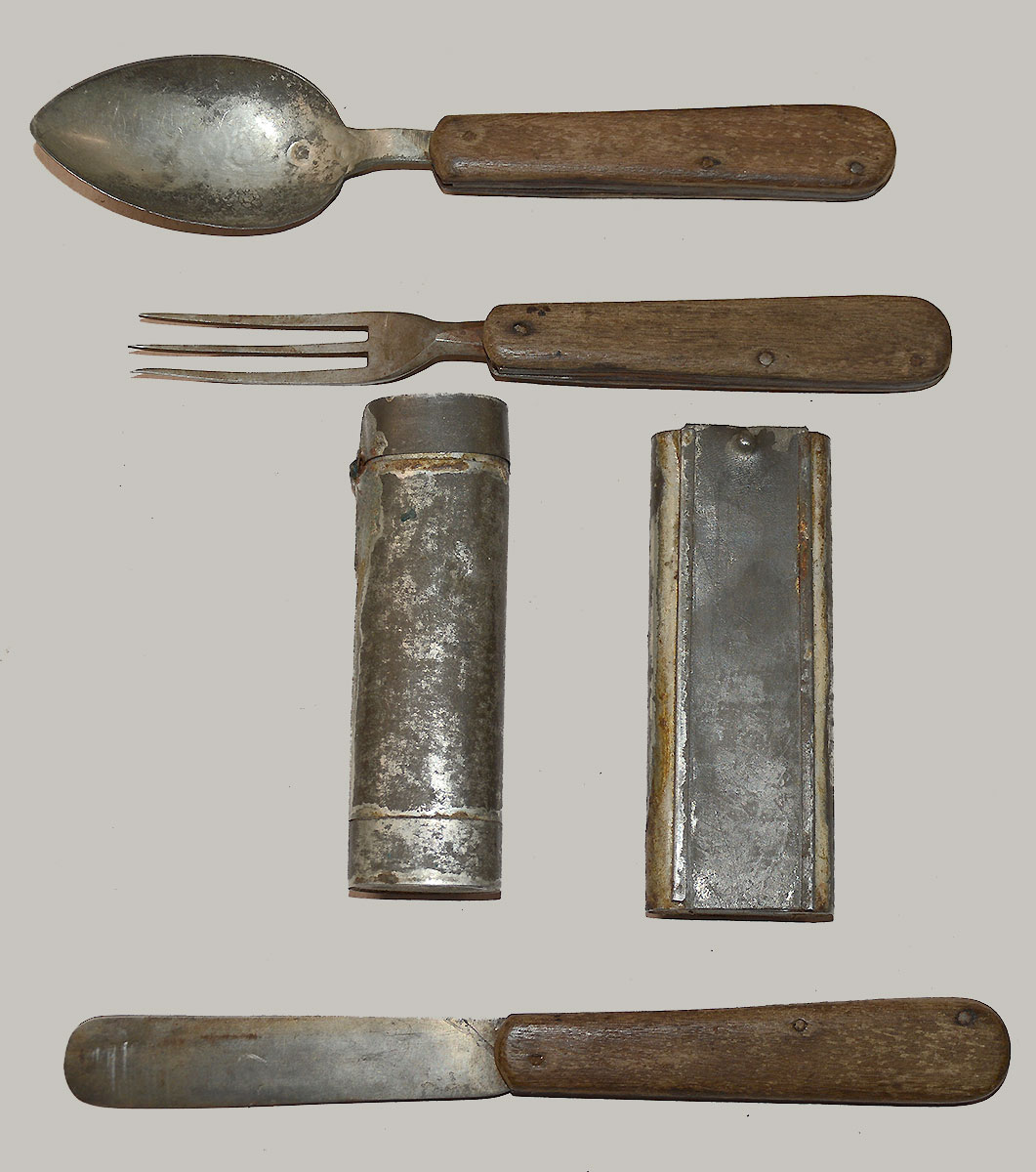
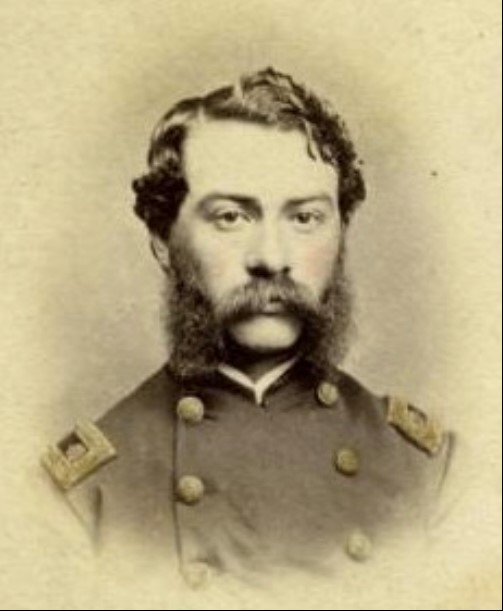
$5,500.00 SOLD
Quantity Available: None
Item Code: 1179-442
This rare, identified, Civil War patent filter canteen and even rarer accompanying mess kit is in excellent condition, has impeccable provenance going back to the famous Stamatelos collection, is illustrated in the Time-Life volume, “Arms and Equipment of the Union” (pgs. 209 and 225,) and most recently was on display at the Texas Civil War Museum. The original owner turns out not only to have served in the 7th NY State Militia during its three-month service in 1862, but joined the 20th Maine as Assistant Surgeon shortly after Gettysburg, serving with it until late February 1865, earning praise from its officers and men, and saving the life of Joshua Lawrence Chamberlain at Petersburg in 1864.
Germs and microorganisms were not understood during the war, but the importance of drinking clean water, or at least what appeared to be clean, was plain enough and various water-filtration devices were commercially marketed to soldiers. Bartholomae combined that idea with some innovations of canteen design to get a patent dated July 9, 1861. He only got one U.S. contract, for 1,010 canteens later that month, but military goods dealers like Schuyler, Hartley and Graham, sold them to officers (who had to purchase their own equipment,) well-heeled enlistedmen, and well-wishing relatives of new soldiers heading off to see the elephant.
This one is in exceptionally good condition. All parts appear to be present. The brass patent plate is still on the wide mouth- Bartholomae’s idea for more rapidly filling the canteen- and its cork stopper is still there. The caps for both the drinking spout and the storage tube for the filter are there. The filter is in place, screwed into the top of the drinking spout- Bartholomae allowed that different filtering materials could be used in it. (The canteen was also specifically designed with a kidney shape for comfort on the march- no swinging around- and had flat bottom so that it could sit upright on a table.) The cloth cover is in place and in very good condition with good seams, showing one small wear spot on the top, a couple of stains on the back, and some wear on the underside of the lower edges where it would naturally rub against the body or a flat surface when standing up. The leather shoulder strap is in place, pliable, full-length, with no tears or breaks.
Even rarer than the canteen itself is the mess kit designed to be carried with it. Made of impressed red leather (perhaps to imitate red Morocco,) the kit has two small loops sewn at the corners for suspension from the canteen strap, and a flap with stitched edge and button hole at lower front that would have fastened over a small button now missing. Stitching divides the kit into five open top sleeves. Two have narrow, tinned iron containers likely for salt and pepper, matches, etc. The others hold a folding knife, fork and spoon with simple wood handles, typical of those used for camping and travel.
The inner flap of the mess kit has a clear ink inscription with light wear inside the cover flap, reading: “A.O. Shaw / Co. 9 7th Regt. / N. Y. S. M.” Abner Orimel Shaw was born in Maine in 1837 and was in New York City studying medicine at Columbia (The College of Physicians and Surgeons) when the war started. Whether he was earlier a member of the 7th NYSM is unclear, but he joined them in Federalizing for a three-month tour of duty in May 1862, their second stint in U.S. service during the war. They left the state May 25, 1862, mustered in on May 29 at Camp Hamilton, VA, for three months dating from May 26, and were stationed most of the time at Baltimore, mustering out in NY City on Sept. 5. Shaw’s acquisition of the canteen and mess kit clearly date to this period from the inscription. Muster rolls include him as a private in Company I, the 9th Company in the regiment’s militia terminology. An error in the copying and printing of the roster resulted in listing him as “Albert O. Shaw” in the printed record, but his pension records and others make clear this is Abner O. Shaw.
Shaw graduated medical school in May, returned to Maine, and obtained a commission as an Assistant Surgeon in the 20th Maine dated June 13, and joined them July 13 in company with a newly appointed Surgeon. The canteen and mess kit likely accompanied him on his new assignment. The regiment had had hard luck with their medical staff. One assistant surgeon was dismissed in March 1863; the other transferred in April; the surgeon resigned in May. The Hospital Steward performed well, but it was not until July 13 that things looked up, but the new surgeon then resigned at the end of August, leaving Shaw to pick up the slack. Shaw did so, however, with energy and capacity, earning the praise of Chamberlain and other officers, sixteen of whom petitioned the Governor for Shaw’s appointment as Surgeon, promotion granted and made effective November 10. Shaw had not only been given charge of a second regiment while still and Assistant Surgeon, he was made acting brigade surgeon as well from December 1. While Shaw was with the regiment, they saw action in the Bristoe and Mine Run campaigns, the Wilderness, Spotsylvania, North Anna, Totopotomoy, Cold Harbor, Petersburg, Weldon Railroad, Peebles Farm, Boydton Plank Road, and Hatchers Run in February 1865, after which he was obliged to resign from the effects of malaria.
Biographies credit him with improving the health of the regiment and caring for casualties of twelve engagements, but perhaps his most notable service was at Petersburg on June 18, 1864, when he was brought to the side of the wounded Chamberlain by the Colonel’s brother. Other doctors deemed the wound mortal and Chamberlain himself, had given up hope. Chamberlain was wounded in the right hip and we spare the reader the rather gruesome, uncomfortable modern medical descriptions of the wound and its treatment. He recounted the episode himself in somewhat elevated language that disguised what was going on, but clearly credited Shaw with persisting even after one last hold-out doctor with him gave up: “… [They] sat down by me and tried to use some instrument to establish proper connection to stop the terrible extravasations which would end my life. All others had given it up, and me too. But these two faithful men bent over their task trying with vain effort to find the entrance to torn and clogged and distorted passages of vital currents. Toiling and returning to the ever impossible ever task, the able surgeon undertaking to aid Dr. Shaw said, sadly, ‘It is of no use, Doctor; he cannot be saved. I have done all possible for the man. Let us go, and not torture him longer.’ ‘Just once more, Doctor; let me try just this once more, and I will give it up.’ Bending to his task, by a sudden miracle, he touched the exact lost thread; the thing was done.”
Shaw returned to Maine, married, raised a family and practiced medicine in the Porland area, passing away in 1934. Against all expectations Chamberlain not only survived his 1864 wound, but returned to the battlefield by the end of the war. The injury troubled him for the rest of his life with subsequent operations unable solve problems it caused, indeed complications and infection ultimately took his life in 1914, but it was Shaw who had saved him and in later life was his personal physician, accompanying Chamberlain to Gettysburg in 1913, where the two pictured among battlefield commissioners.
This is a rare set in itself and all the more remarkable for the owner’s record, which remained unappreciated until recently. It displays wonderfully and would make a great addition to a collection of field gear, but especially to a display related to the 20th Maine and its Colonel. [sr][ph:L]
~~~~~~~~~~~~~~~~~~~~~~~~~~~~~~~~~~~
THIS ITEM, AS WITH ALL OTHER ITEMS AVAILABLE ON OUR WEB SITE,
MAY BE PURCHASED THROUGH OUR LAYAWAY PROGRAM.
CLICK HERE FOR OUR POLICIES AND TERMS.
THANK YOU!
Inquire About RARE INSCRIBED, IDENTIFIED BARTHOLOMAE PATENT FILTER CANTEEN AND MESSKIT OF ABNER O. SHAW: PRIVATE 7th NYSM; ASST. SURGEON 20th MAINE: HE SAVED JOSHUA LAWRENCE CHAMBERLAIN’S LIFE AT PETERSBURG!
Most Popular
Historical Firearms Stolen From The National Civil War Museum In Harrisburg, Pa »
Theft From Gravesite Of Gen. John Reynolds »
Selection Of Unframed Prints By Don Troiani »
Fine Condition Brass Infantry Bugle Insignia »
Large English Bowie Knife With Sheath 1870’S – 1880’S »
Imported (Clauberg) Us Model 1860 Light Cavalry Officer's Saber »
featured item
VERY FINE, VERY RARE .36 CALIBER, 6-CAVITY GANG MOLD FOR COLT M1851 NAVY REVOLVER
Measuring 13” long, this iron bullet mold casts six .36 caliber elongated pistol bullets. Turned wood handles and brass ferrules are fitted over the arms of the mold halves. The sprue cutter is attached to the top at the hinge pin and swings from… (1304-117). Learn More »


